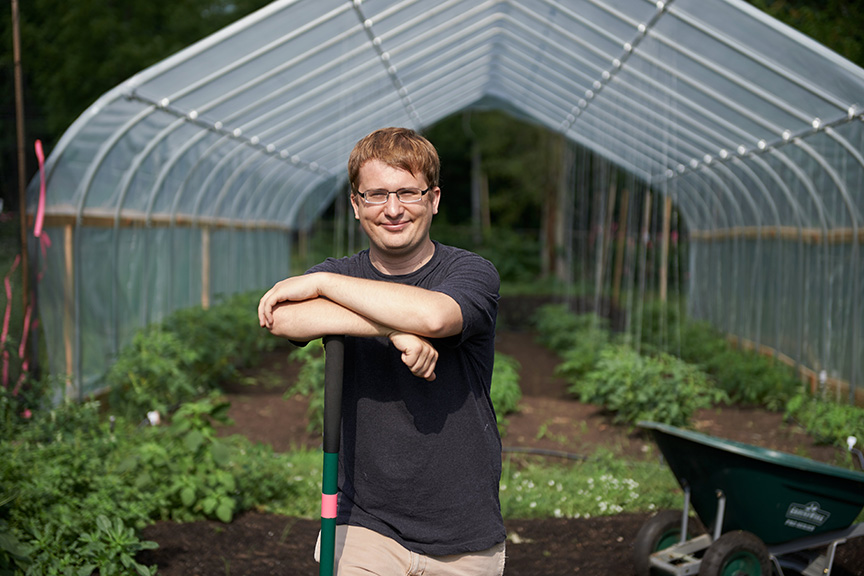Farm to early care and education is a foundational program that connects young children with local food production by bringing farm-fresh food into early care and education settings and offering experiential learning with edible gardens, cooking and tasting fresh fruits and vegetables. Farm to early care and education initiatives work across systems, linking education, health and agriculture to support children’s cognitive, physical and social-emotional development; improve community nutrition; and build sustainable local food systems.
At the state level, legislatures and state agencies are helping grow the farm to early care and education movement. This also includes directing federal funds, appropriating state funding and supporting state policies and programs so these initiatives can take root and blossom.

Leverage state and federal funding.
The Child Care and Development Block Grant (CCDBG), as well as Head Start and Early Head Start are two primary sources of funding that states can use for farm to early care and education initiatives. With a state match, CCDBG provides federal funding to states, territories and Tribes to improve families’ access to quality early care and education, as well as to support professional development for providers. Head Start is a federal program that is allocated through a competitive local process, with a focus on early learning and development, health and nutrition and family engagement. Head Start is widely considered the most comprehensive early childhood program in the United States.
“If we want to address racial equity through farm to early care, we have to empower and invest in providers who are rated lower in YoungStar, Wisconsin’s quality rating system, and tend to be located in food deserts.”
Dadit Hidayat, Kids Forward
Use reimbursement funds to support children and farmers.
The Child and Adult Care Food Program (CACFP) provides reimbursement for serving nutritious meals and snacks in Head Start programs, family child care providers and child care centers, as well as after-school programs and adult care centers. States are also using CACFP to implement state reimbursement programs, offering an additional 7 to 10 cents per meal for incorporating locally grown foods. For example, Iowa has a Local Food Makes Cents: For Iowa Kids and Farmers program to incentivize local procurement and alleviate financial barriers for CACFP providers. Still, for smaller early care and education providers, the CACFP reimbursement process can be cumbersome, and more needs to be done to support their ability to get this funding.
Tap into federal funding for local farmers.
The Local Food Promotion Program and the Farmers Market Promotion Program are two federal opportunities to increase access to and availability of locally and regionally produced agricultural products that can be used for farm to early care and education. These two programs are paired as part of the Local Agricultural Markets Program that was created by the 2018 Farm Bill and have received additional funding through the American Rescue Plan Act (ARPA).

Maximize the American Rescue Plan Act.
With the ARPA appropriation, more than $80 billion in new aid is available that can be tapped to strengthen farm to early care and education. State agencies, organizations and providers can leverage multiple funding streams: child care stabilization funding, child care assistance funding, Head Start and Early Head Start, Specialty Crop Block Grant Program and CACFP. With this ARPA funding, state leaders have a unique opportunity to grow and feed the proven movement.
If policymakers better understood just how critical good nutrition is in the early years of a child’s life and how that can really set the trajectory for a child’s learning and development throughout childhood and into adulthood, it would be a ‘no brainer’ to invest in farm to early care programs and policies that produce healthy, productive citizens and cost less money in the long run.
Melissa Haberlen DeWolf, Voices for Georgia’s Children
Ensure state appropriations.
Sixteen state legislatures have considered bills to support the farm to early care and education movement over the past several years. In 2019 and 2020, state legislatures in Arkansas, Colorado, Michigan, Minnesota and Oregon passed legislation to support farm to early care and education initiatives. This includes specific appropriations, incentives to encourage use of locally sourced food in child care meals and expansion of the reimbursement programs that leverage CACFP to provide centers with matching grants for using locally grown fruits and vegetables.
Invest in state coalitions.
Successful farm to early care and education programs require cross-sector coordination at the state level. Many states are doing this – bringing together early care and education providers, local farmers, community-based organizations and state agencies in education, health and agriculture to align around shared values and design farm to early care and education programs that benefit our youngest learners, local farmers and entire communities. States can also fund a full-time staff person at a nonprofit or within a state agency to drive collaborative work.
Our children cannot wait.
View and download this policy brief
Discover more policy briefs about Farm to Early Care and Education
The Promise of Farm to Early Care and Education
Farm to Early Care and Education Means a Community Working Together
Opportunities to Improve Farm to Early Care and Education Procurement
Investing in Farm to Early Care and Education
This guide is for funders and all who seek to support farm to early care and education programs that nourish children, families and communities.
The W.K. Kellogg Foundation works to strengthen opportunities for the health and well-being of children, families and communities through investments in equitable food and learning systems. Over the last five years, the foundation has invested $18 million to support National Farm to School Network, Policy Equity Group and state partners in building a vibrant network of farm to early care and education programs and sharing best practices and tools for expanding the model across the country.


Comments